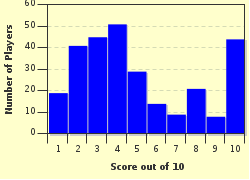Quiz Answer Key and Fun Facts
1. The pediatrician palpated this sausage-like mass in the abdomen (right upper quadrant) of an infant.
2. Mr. Pacific noticed this small bony prominence on the distal joint of his friend's index finger.
3. Mama Mia observed that her four-year-old son always supports himself by his hands to stand.
4. There was a twitching of Mr. Unmentionable's facial muscles after a slight tap over the facial nerve in front of the tragus of the ear.
5. Nurse Sweetie saw these white patches in the conjunctiva of a seven-year-old girl.
6. These subcutaneous pinpoint-sized red dots (petechiae) appeared in the upper arm of Ms. Twinkle Twinkle for one minute after applying a not so tight bandage for 5-10 minutes.
7. A clunk was heard when the pediatrician abducted the hip of a nine-month-old infant as the leg was lifted anteriorly.
8. Ms. Epsilon had experienced a sudden electric shock-like spasm moving down her spine and limbs after flexing her head to sign a document.
9. Pain in the right upper quadrant (RUQ) of the abdomen, jaundice and fever are known as _________ triad pertaining to cholangitis (inflammation of bile duct).
10. Mr. Wonderful was shocked to see these scars and abrasions on the back of the hands of his girlfriend.
Source: Author
Ate_May
This quiz was reviewed by FunTrivia editor
crisw before going online.
Any errors found in FunTrivia content are routinely corrected through our feedback system.


